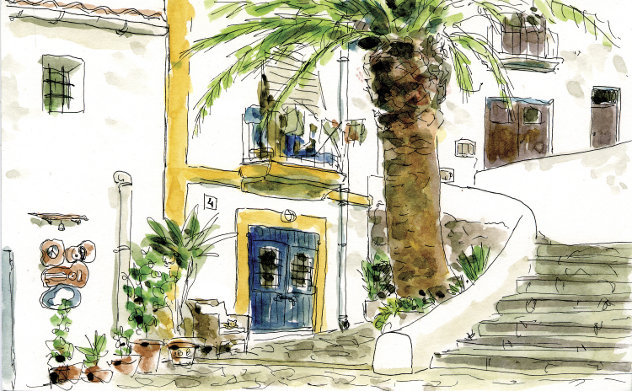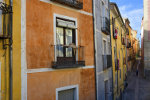Taking out a mortgage in Spain
Saskia Gruijters, Wednesday, 22 February 2017

This article is part of a series of 8 articles about buying property in Spain. The other articles in the series cover the following topics:
This article is part of a series of 8 articles about buying property in Spain. The other articles in the series cover the following topics:
Imagine you have found your dream house in Spain and you need finance to realise your dream. For sure questions, may arise about taking out a mortgage in Spain, probably because you do not manage the language this could seem a complicated task.
Underneath we will give you some points of consideration to make it a bit easier for you, and to get a general idea about the mortgage possibilities in Spain.
How much can I borrow?
Different than in your home country you can borrow up to a maximum of 70% of the purchase price or valuation. If you are a fiscal resident, you may borrow up to a maximum of 80%.
Spanish banks will take into consideration your income and also your existing mortgage charges. The guideline is that around 1/3 of your net income may be used for mortgage payments. You will need to prove to the bank your income and liabilities by showing them original documents. Spanish banks require complete insight into your financial situation.
Valuation
The bank will take care of the valuation through authorized agencies. The value will be determined by the number of registered m2. Also, factors like the status of the property, its situation, building material and location of the property, in the city or on the country side (campo).
A copy of the valuation will be given to the applicant in all cases.
Mortgage type
Interest only mortgages are not on the market anymore. The usual mortgage type in Spain is standard a repayment mortgage. With this type of mortgage, you will be paying interest and capital. The interest is paid over the outstanding mortgage amount.
Interest
When the general interest rate is low, it could be interesting to change to a fixed rate. Nowadays more and more mortgages are being taken out with a fixed interest rate. There are different ways to fix the interest. When choosing the right bank make sure you do not get tempted only by a low interest rate, these are offered through unnecessary and expensive cross selling products. you will find more information about this.
What does a mortgage in Spain cost?
The total costs for a purchase and a mortgage in Spain are about 12% of the purchase price (if you buy second hand). The following costs are included: Taxes, Notary, Register, bank costs and valuation. It is advisable to be assisted by a lawyer and to have your mortgage assessed by a specialised company. This will avoid a lot of unnecessary costs and uncertainty.
Are there any possibilities to refinance a Spanish mortgage?
Mortgages that have been taken out in the past can often be improved. For example, by taking advantage of a low interest period and change it to a fixed rate. This is not possible with all banks, it is important to be informed well and to contact banks that are internationally orientated. A local mortgage intermediary knows exactly which banks are open to re-negotiate your current mortgage. Before you refinance, an important step is to study the mortgage deed to see if the floor rate is mentioned.
Hot! The notorious mortgage floor clause.
In the past a lot of variable rate mortgages have been contracted with a minimal interest rate (floor). As a result of this floor people were not able to benefit from the low Euribor interest. This interest floor clause (also known as floor clause or tunnel clause) has been declared void in December 2016 by the European Court of Justice. Spanish banks have been obliged to pay back the interest if this floor was not explained correctly to the customer.
Finally, please be well advised about the possibilities of applying for a mortgage in Spain. Would you like more information?

This article is part of a series of 8 articles about buying property in Spain. The other articles in the series cover the following topics:
This article is part of a series of 8 articles about buying property in Spain. The other articles in the series cover the following topics:
Imagine you have found your dream house in Spain and you need finance to realise your dream. For sure questions, may arise about taking out a mortgage in Spain, probably because you do not manage the language this could seem a complicated task.
Underneath we will give you some points of consideration to make it a bit easier for you, and to get a general idea about the mortgage possibilities in Spain.
How much can I borrow?
Different than in your home country you can borrow up to a maximum of 70% of the purchase price or valuation. If you are a fiscal resident, you may borrow up to a maximum of 80%.
Spanish banks will take into consideration your income and also your existing mortgage charges. The guideline is that around 1/3 of your net income may be used for mortgage payments. You will need to prove to the bank your income and liabilities by showing them original documents. Spanish banks require complete insight into your financial situation.
Valuation
The bank will take care of the valuation through authorized agencies. The value will be determined by the number of registered m2. Also, factors like the status of the property, its situation, building material and location of the property, in the city or on the country side (campo).
A copy of the valuation will be given to the applicant in all cases.
Mortgage type
Interest only mortgages are not on the market anymore. The usual mortgage type in Spain is standard a repayment mortgage. With this type of mortgage, you will be paying interest and capital. The interest is paid over the outstanding mortgage amount.
Interest
When the general interest rate is low, it could be interesting to change to a fixed rate. Nowadays more and more mortgages are being taken out with a fixed interest rate. There are different ways to fix the interest. When choosing the right bank make sure you do not get tempted only by a low interest rate, these are offered through unnecessary and expensive cross selling products. you will find more information about this.
What does a mortgage in Spain cost?
The total costs for a purchase and a mortgage in Spain are about 12% of the purchase price (if you buy second hand). The following costs are included: Taxes, Notary, Register, bank costs and valuation. It is advisable to be assisted by a lawyer and to have your mortgage assessed by a specialised company. This will avoid a lot of unnecessary costs and uncertainty.
Are there any possibilities to refinance a Spanish mortgage?
Mortgages that have been taken out in the past can often be improved. For example, by taking advantage of a low interest period and change it to a fixed rate. This is not possible with all banks, it is important to be informed well and to contact banks that are internationally orientated. A local mortgage intermediary knows exactly which banks are open to re-negotiate your current mortgage. Before you refinance, an important step is to study the mortgage deed to see if the floor rate is mentioned.
Hot! The notorious mortgage floor clause.
In the past a lot of variable rate mortgages have been contracted with a minimal interest rate (floor). As a result of this floor people were not able to benefit from the low Euribor interest. This interest floor clause (also known as floor clause or tunnel clause) has been declared void in December 2016 by the European Court of Justice. Spanish banks have been obliged to pay back the interest if this floor was not explained correctly to the customer.
Finally, please be well advised about the possibilities of applying for a mortgage in Spain. Would you like more information?
Saskia Gruijters

Spanish property for sale. Appartements, villas and housesfor sale in Spain Costa del Sol, Costa Brava and Costa Blanca. For sale by owner and by agent.
 Any successful move from one home to another relies on a smooth process, so getting the right estate agent is integral to success. But how do you
recognise a good estate agent when you are in Spain? To find an estate agent with a commendable knowledge of the buying and selling of properties,
it’s
a good idea to have a few measures in place which will ease the whole process.
Any successful move from one home to another relies on a smooth process, so getting the right estate agent is integral to success. But how do you
recognise a good estate agent when you are in Spain? To find an estate agent with a commendable knowledge of the buying and selling of properties,
it’s
a good idea to have a few measures in place which will ease the whole process. 